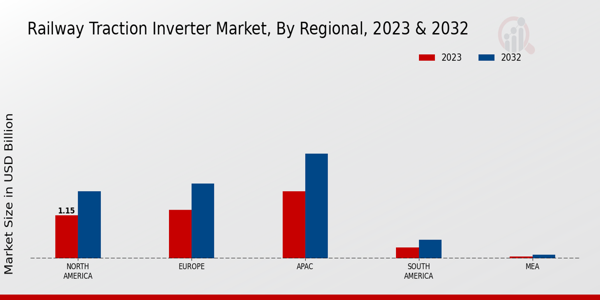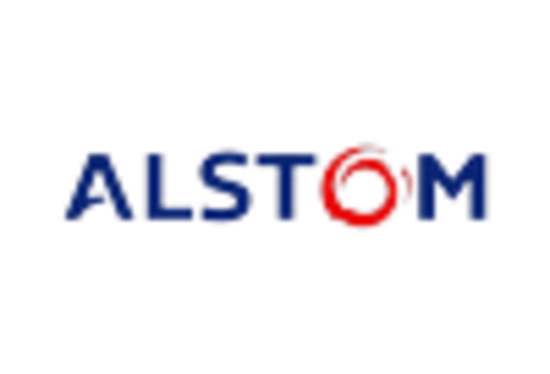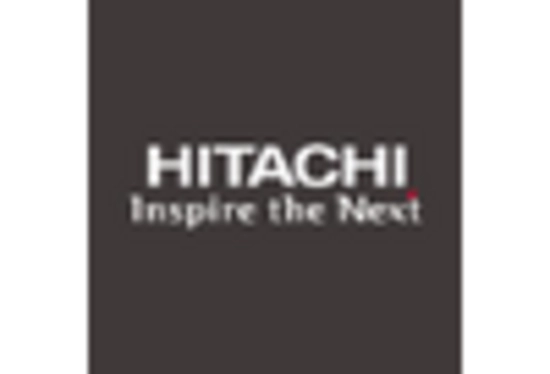Electrification Initiatives
The ongoing electrification initiatives in railway systems are a primary driver for the Railway Traction Inverter Market. Governments and railway operators are increasingly investing in electrification to enhance energy efficiency and reduce carbon emissions. This shift towards electric trains is expected to boost the demand for traction inverters, which are essential for converting electrical energy into usable power for train propulsion. According to recent data, the electrification rate of rail networks is projected to reach 70 percent by 2030, indicating a substantial market opportunity for traction inverter manufacturers. As more countries commit to sustainable transport solutions, the Railway Traction Inverter Market is likely to experience significant growth, driven by the need for advanced inverter technologies that support electrified rail systems.
Advancements in Power Electronics
Advancements in power electronics technology are significantly influencing the Railway Traction Inverter Market. The development of high-efficiency inverters, which utilize cutting-edge semiconductor materials such as silicon carbide and gallium nitride, is enhancing the performance and reliability of traction systems. These innovations allow for better thermal management and increased power density, which are crucial for modern rail applications. Market data suggests that the adoption of these advanced power electronics could lead to efficiency improvements of up to 30 percent in traction systems. As rail operators seek to optimize energy consumption and operational costs, the demand for sophisticated traction inverters is expected to rise, thereby propelling the Railway Traction Inverter Market forward.
Integration of Renewable Energy Sources
The integration of renewable energy sources into railway systems is emerging as a crucial driver for the Railway Traction Inverter Market. As rail operators seek to enhance energy sustainability, the incorporation of solar and wind energy into electrified rail networks is becoming more prevalent. Traction inverters play a vital role in this integration by converting renewable energy into usable power for train operations. Market analysis indicates that the share of renewable energy in rail electrification is expected to increase significantly, with projections suggesting a rise to 30 percent by 2030. This shift not only supports environmental objectives but also reduces operational costs for rail operators. Consequently, the Railway Traction Inverter Market stands to benefit from the growing demand for inverters that facilitate the use of renewable energy in rail systems.
Growing Urbanization and Rail Infrastructure
The rapid pace of urbanization is driving the expansion of rail infrastructure, which in turn fuels the Railway Traction Inverter Market. As urban populations grow, the demand for efficient public transportation systems increases, leading to investments in new rail projects and the upgrading of existing networks. This trend is particularly evident in emerging economies, where urban rail systems are being developed to alleviate congestion and improve connectivity. Recent statistics indicate that urban rail projects are expected to see a compound annual growth rate of over 5 percent in the coming years. Consequently, the need for reliable and efficient traction inverters to support these expanding rail networks is becoming increasingly critical, positioning the Railway Traction Inverter Market for robust growth.
Regulatory Support for Sustainable Transport
Regulatory support for sustainable transport initiatives is a significant driver of the Railway Traction Inverter Market. Governments worldwide are implementing policies aimed at reducing greenhouse gas emissions and promoting the use of electric trains. These regulations often include incentives for electrification and the adoption of energy-efficient technologies, which directly impact the demand for traction inverters. For instance, several countries have set ambitious targets for reducing carbon footprints in the transportation sector, which necessitates the integration of advanced traction systems. As these regulatory frameworks evolve, they are likely to create a favorable environment for the Railway Traction Inverter Market, encouraging investments in innovative inverter solutions that align with sustainability goals.


















Leave a Comment